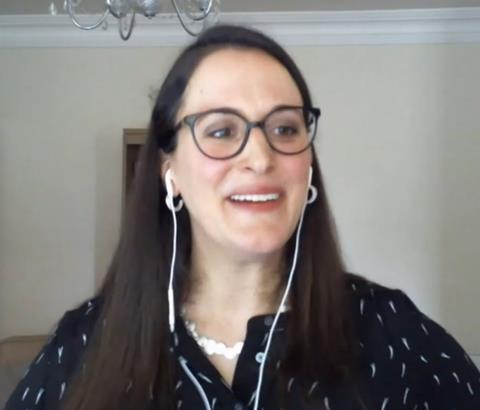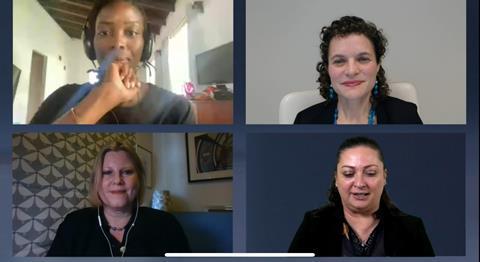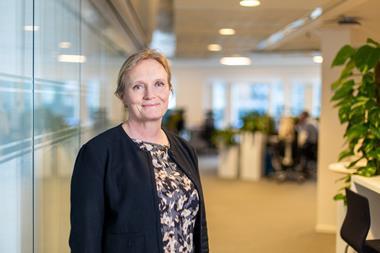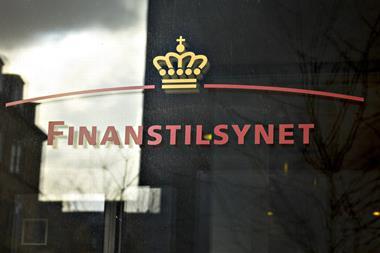When it comes to making financial decisions, including about retirement, many women feel at a disadvantage compared to men, several believing financial products, communication and marketing about such products tend to be biased toward men. However, “women know more about finance than they think they know,” said Andrea Sticha, deputy academic director at the Global Financial Literacy Excellence Center for the Stanford Graduate School of Business, during an IPE webinar about diversity and inclusion this week to mark International Women’s Week.
During the IPE webinar – Focus on female financial literacy – Sticha said it was important to note that knowledge and confidence mattered when making financial decisions. “Those with less financial knowledge and less confidence are also less likely to invest in the stock market,” she exemplified.
Referencing the paper Fearless women, Sticha said that women with low financial literacy are four times more likely to be debt constrianed and five times more likely to spend 10 or more hours per week on problems related to their personal finances.
“So financial knowledge matters because it has implications for financial decision-making and ultimately financial wellbeing and resilience,” she added.

“I think it comes down to reminding women that they have the skills already,” said Kia Commodore, founder of Pennies to Pounds, a platform that empowers individuals to take control of their finances.
She said that with financial jargon and social media, it can be overwhelming for any individual to make a good financial decision. “But once you understand that jargon and what some terms mean, then you can say: OK, I can make these decisions […] I’m planning out for my pension and I know what that means now.”
In terms of financial literacy, women have persistently lower rates of financial literacy at all stages of life, regardless of education level and marital status, said Julie Miller, a director of thought leadership, financial resilience, at AARP (formerly the American Association of Retired Persons), a nonprofit, nonpartisan organisation that empowers people to choose how they live as they age.
“We know that it’s also structural inequalities – things like ageism, the gender pay gap, lack of pensions coverage and cost of caregiving – that women are predominantly saddled with, often more than men. Plus economic factors like inflation, a high cost of living, plus lower levels of financial literacy that can create often constrained choices for women when it comes to financial decision-making,” she noted.

“One of the things we invested in at Kantar is understanding financial decision-making, particularly in women,” said Lindsay Gorton-Lee, a brand strategy consultant at Kantar, a data, insights and consulting company.
According to Kantar data, less than half of women in the UK feel in control of their financial future, she said. More recent data shows that only 40% of women under 40 years old have a financial plan.
“This is tragic when you consider that financial independence is the single biggest contributor to self-esteem,” Gorton-Lee stated. “While financial confidence does increase with age, that gap between managing long-term and short-term finances remains, and financial literacy is, of course, a huge factor.”
She also noted that “financial engagement is the real barrier created by the unconscious biases and education and financial communication”. She said: “If women aren’t engaged, it doesn’t matter how well crafted the product proposition or the communication might be, they won’t be listening.”
Appealing to the female audience
Hena Mehta, co-founder and chief executive officer of Basis, India’s first prepaid card for women, noted that the financial services industry should pay closer attention when building and designing financial products, in addition to when a product aimed specifically at women is being marketed.
”A common myth is that women are extremelly risk averse and prefer to stick to safe investments, but what I’ve seen is women are far more risk aware. Women tend to ask more questions, try to get into more detail. Those are great traits for a long-term investor,” she said.
Davinia Tomlinson, the founder of rainchq – which helps women build financial resilience and sustainable wealth – and author of the book Cash is Queen, said her book was an opportunity to capture young females’ attention and embed positve financial habits early.

She stated that there is extensive data that “points to the fact that girls’ confidence levels drop off a cliff when they get about eight or nine”.
“When we talk about money, it’s so inextricably linked with our confidence, our self-esteem as women,” Tomlinson said.
Fintech’s role
Sticha said policies and programmes need to be in place to address the gender pay gap. She noted that fintech could play a role in promoting digital and financial literacy, sugesting that financial education should be mandatory in schools because financial literacy is particularly low amonth the young.
“But we cannot stop with the young,” she said, adding that financial education and resouces should also be provided to adults through the workplace, for instance.
“In the fintech industry, particularly in terms of product development and design and marketing, scenarios are really important when creating products,” said Joy Jansen, human centred designer at fresk.digital, an agency for data-driven digital creation.
“Gender diversity is something that applies in this as well,” she said, adding: ”We try to include as many scenarios as possilbe to make sure that we’re not excluding certain user groups. And instead of focusing just on demographics or genders, for instance, we try to focus on scenarios that people face and focus on how to solve those, creating a much better product,” she said.
Looking for IPE’s latest magazine? Read the digital edition here







































No comments yet